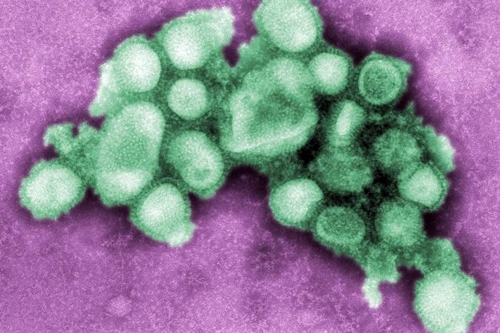5 October 2015. A clinical trial testing a synthetic antibody designed to treat influenza A shows the treatment is effective in reducing the spread of flu viruses in humans. Visterra Inc., the therapy’s designer, also received a contract valued as much as $204.5 million from the U.S. Department of Health and Human Services to further develop the product into a full-fledged treatment for influenza A.
Influenza A is a type of flu virus that occurs in animals and birds, and can spread to humans under conditions where birds or animals and humans come into close contact, causing serious symptoms and becoming life-threatening. The swine flu pandemic in 2009, caused by the H1N1 virus, is among the better known strains, which often reappears as a seasonal flu virus. Most influenza A strains do not spread easily from one human to another, but because flu viruses can mutate, health authorities want to be prepared for strains that can spread human-to-human.
Visterra, in Cambridge, Massachusetts, is a developer of therapies for infectious diseases, based on a technology developed in the lab of bioengineering professor Ram Sasisekharan at MIT. That technology uses computational techniques to identify areas of highly networked amino acid clusters in antigens, the proteins that generate antibodies in the immune system to fight invading pathogens, and designs synthetic antibodies targeting those clusters. Sasisekharan founded Visterra in 2008 and serves on the company’s board.
The intermediate-stage clinical trial is testing Visterra’s lead product code-named VIS410, a synthetic antibody designed to neutralize all influenza A strains, both seasonal and pandemic, with one treatment in patients hospitalized with those infections. The company says VIS410 prevents the fusion of cell membranes between the influenza A virus and host, preventing RNA from the virus entering the host cell, and thus stopping the virus from replicating. Visterra notes that its technology identified the target area for VIS410 in a region of the influenza protein common to all subtytpes of that virus, which is also resistant to mutation.
The trial focuses on VIS410’s ability to stop influenza A viruses from spreading in healthy human volunteers who received inoculations of the H1N1 virus. The company reports 31 volunteers received the H1N1 virus, of which 20 became infected. Of those 20 participants, 13 were randomly chosen to receive an intravenous dose of VIS410, while the remaining 7 individuals received a placebo, after pre-treatment with over-the-counter antihistamines.
The study team looked primarily at the extent of viral shedding, the release of replicated viral offspring in the body, as well as measurements of virus RNA in study participants. Results show volunteers receiving VIS410 had much less viral shedding and lower viral RNA counts than participants receiving placebos, as well as no respiratory symptoms after two days. The differences between the groups were so stark, says Visterra, that even with the small number of participants, the findings were considered statistically reliable, leading to a decision to close this part of the study earlier than expected. The company plans to present complete results at an upcoming medical conference.
The trial was funded by the Biomedical Advanced Research and Development Authority, or BARDA, a division of the Health and Human Services department. Visterra says the company received a new five-year contract from BARDA to further develop VIS410, including support for more clinical trials, toxicology testing, preparations for regulatory review, and refinement of manufacturing processes. If all options in the contract are exercised, the contract can be worth as much as $204.5 million to Visterra.
Read more:
- Simple Avian Flu Test Designed for Poultry
- RNA Flu Therapy Clinical Trials Complete Enrollment
- Flu Vaccine Shown to Protect Against Avian Influenza
- FDA Approves New Influenza Treatment
- Patent Awarded for Detailed Pandemic Flu Detection Test
* * *


 RSS - Posts
RSS - Posts
You must be logged in to post a comment.